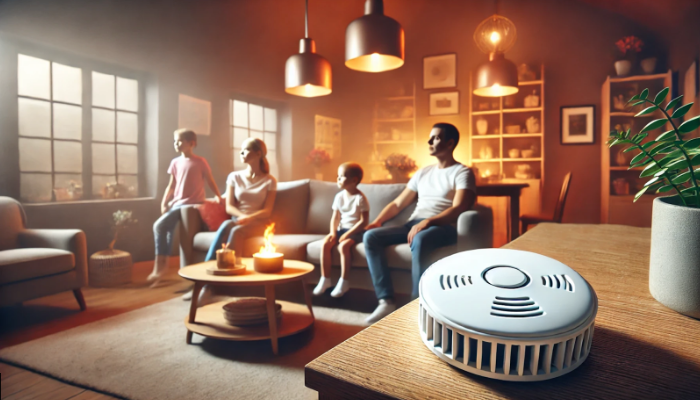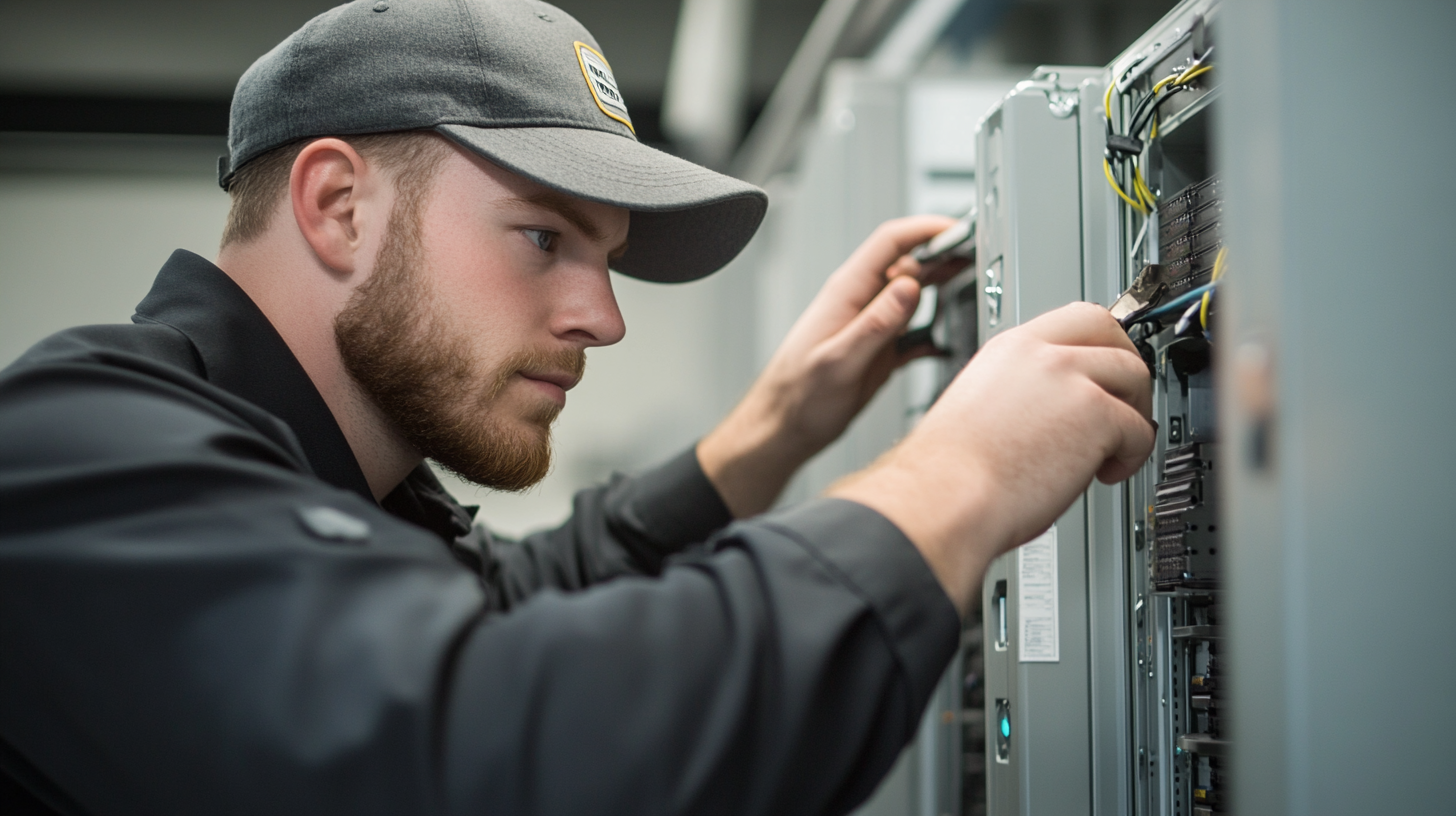Most Common Cause of Furnace Short Cycling
-
 By
Michael Haines
By
Michael Haines
- Dec 31, 2024

A furnace is a vital component of your home’s heating system, designed to keep your indoor environment comfortable during the colder months. By cycling on and off, it maintains a consistent temperature, ensuring optimal energy efficiency and comfort. However, when your furnace begins to short cycle—turning on and off more frequently than normal—it can lead to a host of problems.
Furnace short cycling is more than just a minor inconvenience. This issue occurs when your furnace shuts down before completing a full heating cycle, only to restart shortly after. Over time, this repeated cycling can strain the system, reduce its lifespan, and increase energy consumption. As a result, you may find yourself with higher utility bills and an uncomfortable home environment.
Understanding the causes of furnace short cycling is crucial, as the issue often stems from underlying problems such as dirty filters, thermostat malfunctions, or even an improperly sized unit. Ignoring these signs can lead to costly repairs or replacements in the long run.
In this blog, we’ll explore the most common causes of furnace short cycling, how it impacts your home and wallet, and actionable steps to address and prevent this problem. Keep reading to learn more about maintaining your furnace’s efficiency and longevity.
What is Furnace Short Cycling?
Furnace short cycling occurs when a furnace turns on and off more frequently than it should, failing to complete a full heating cycle. Normally, a furnace operates in cycles that last between 10 to 15 minutes, depending on the size of your home and the set thermostat temperature.
During a short cycling event, the furnace might run for only a few minutes before shutting off, then restarting shortly after. This irregular pattern not only disrupts your home’s heating but also places unnecessary strain on the system.
How to Recognize Furnace Short Cycling
Spotting furnace short cycling early can save you time, money, and discomfort. Here are the key signs to watch for:
- Frequent On/Off Cycles: If your furnace is cycling on and off every few minutes, it’s a clear indicator of short cycling.
- Uneven Heating: Some rooms may feel warm while others remain cold, as the furnace doesn’t run long enough to distribute heat evenly.
- Unusually High Energy Bills: Short cycling forces your furnace to work harder, leading to higher energy consumption and inflated utility bills.
- Unusual Noises: Repeated clicking or mechanical sounds as the furnace starts and stops may signal short cycling.
Importance of Identifying the Issue Early
Furnace short cycling isn’t just inconvenient—it can lead to more significant problems if left unaddressed. The constant starting and stopping cause excessive wear and tear on essential components like the blower motor and heat exchanger. Over time, this can result in costly repairs or even the need for a full system replacement.
Moreover, short cycling reduces the overall efficiency of your furnace. Since the system doesn’t run long enough to heat your home effectively, you may experience discomfort during colder months. Additionally, the energy wasted during frequent cycling contributes to higher utility bills.
By identifying and addressing the root cause of short cycling early, you can prevent these issues, extend the lifespan of your furnace, and ensure consistent heating throughout your home. Understanding the basics of furnace short cycling is the first step toward maintaining a reliable and efficient heating system.
Common Symptoms of a Short-Cycling Furnace
Recognizing the symptoms of a short-cycling furnace is essential for addressing the problem early. Here are the most common signs:
- Frequent On/Off Cycles: The most noticeable symptom of furnace short cycling is its inability to complete a full heating cycle. If your furnace turns on, runs for only a few minutes, and then shuts off repeatedly, this is a clear indicator of short cycling.
- Uneven Temperatures: Short cycling disrupts the proper distribution of heat throughout your home. Some rooms may feel too warm, while others remain cold, leaving your home uncomfortable and inconsistent.
- Higher Energy Bills: A furnace that frequently cycles on and off consumes more energy than one running efficiently. You may notice a significant spike in your utility bills, even if your overall usage patterns haven’t changed.
If you observe these symptoms, addressing the issue promptly can prevent further damage and restore your furnace's efficiency.
What Causes Furnace Short Cycling?
Furnace short cycling can result from a variety of issues, ranging from minor maintenance problems to more significant system flaws. Below is a detailed explanation of the most common causes.
1. Dirty Air Filters
One of the most frequent causes of furnace short cycling is a dirty air filter. When the filter becomes clogged with dust and debris, it restricts airflow into the furnace. This lack of airflow causes the system to overheat, triggering a safety mechanism that shuts the furnace off prematurely. As the furnace cools down, it restarts, only to repeat the cycle.
Regularly checking and replacing air filters every 1-3 months can prevent this issue, ensuring smooth operation and maintaining optimal efficiency. Neglecting this simple task can lead to unnecessary wear and tear on your furnace.
2. Thermostat Issues
A malfunctioning or improperly placed thermostat can lead to short cycling. If the thermostat is near a heat source, such as direct sunlight or a heating vent, it may detect incorrect temperatures and signal the furnace to shut off prematurely. Similarly, faulty wiring or calibration issues can cause erratic cycling. To fix this, ensure your thermostat is correctly positioned away from heat sources and check for proper functioning. In some cases, upgrading to a programmable or smart thermostat can help maintain consistent temperatures.
3. Overheating Furnace
An overheating furnace is another common cause of short cycling. This typically occurs when airflow is restricted due to dirty filters, blocked vents, or a malfunctioning blower motor. Overheating triggers the furnace’s safety features, which shut it down to prevent damage. The furnace will attempt to restart once it cools, but the cycle repeats unless the root cause is addressed. Regular maintenance, such as cleaning and inspecting the system, can help prevent overheating and ensure your furnace operates safely and efficiently.
4. Blocked Vents or Registers
When vents or registers are blocked by furniture, curtains, or other obstructions, it disrupts the airflow needed for efficient furnace operation. This can create pressure imbalances in the system, causing it to overheat and short cycle. Additionally, closed vents in unused rooms can have a similar effect. Ensure all vents and registers are clear and open to allow proper air circulation. Simple adjustments like repositioning furniture or removing obstructions can resolve this issue and prevent short cycling.
5. Improperly Sized Furnace
An improperly sized furnace can cause short cycling due to inefficiency. A furnace that’s too large for your home will heat the space quickly, but it shuts off before completing a full cycle, leading to frequent restarts. Conversely, an undersized furnace may struggle to maintain the desired temperature, causing similar cycling issues. A professional HVAC technician can assess your home’s heating needs and ensure the correct furnace size for optimal performance and energy efficiency.
6. Malfunctioning Flame Sensor
The flame sensor is a safety component that detects whether the furnace’s burners are lit. A dirty or faulty flame sensor can mistakenly signal the furnace to shut down prematurely, resulting in short cycling. Cleaning or replacing the sensor can resolve this issue.
7. Low Gas Pressure or Other Mechanical Issues
Low gas pressure or mechanical problems, such as a failing blower motor or control board, can disrupt the furnace’s normal operation, causing short cycling. These issues often require professional diagnosis and repair to ensure safe and effective furnace performance.
Is Furnace Short Cycling Dangerous?
Furnace short cycling is not just an inconvenience; it can pose risks to both your home and the furnace itself. Ignoring this issue can lead to safety concerns, long-term costs, and reduced energy efficiency.
Risks to the Furnace and Home Safety
Short cycling causes excessive wear and tear on key components, such as the heat exchanger, blower motor, and ignition system. Over time, this strain can lead to system failures and costly repairs. In extreme cases, a cracked heat exchanger can release dangerous gases like carbon monoxide into your home, posing a serious health risk.
Additionally, frequent restarting increases the likelihood of overheating, which can trigger safety mechanisms or even cause electrical malfunctions. This makes short cycling a potential fire hazard if left unresolved.
Long-Term Costs and Energy Inefficiency
Short cycling significantly reduces your furnace’s efficiency by wasting energy during frequent on/off cycles. A furnace consumes the most energy when starting up, so constant restarts drive up your utility bills. Over time, this inefficiency can also shorten the furnace’s lifespan, leading to premature replacement costs.
Addressing furnace short cycling promptly is essential for ensuring safety, maintaining efficiency, and avoiding unnecessary expenses. A well-functioning furnace is key to a comfortable and secure home.
How to Fix Short Cycling Furnace Problems
1. Replace or Clean Air Filters
Dirty air filters are a common cause of furnace short cycling. Over time, filters become clogged with dust and debris, restricting airflow and causing the furnace to overheat. This overheating triggers safety features that shut the system off prematurely. To fix this, replace or clean your air filter regularly—typically every 1-3 months, depending on usage and filter type.
A clean filter ensures proper airflow, reduces the risk of overheating, and restores your furnace’s efficiency. By addressing this issue promptly, you can avoid asking, "How do I stop my furnace from short cycling?"
2. Inspect and Reposition the Thermostat
Thermostat issues, such as poor placement or malfunctioning sensors, can cause short cycling. If the thermostat is near a heat source or draft, it may incorrectly sense the room’s temperature and signal the furnace to shut off too soon. To fix this, reposition the thermostat away from heat sources, direct sunlight, or vents. Additionally, check for calibration issues or low battery levels.
These simple adjustments can resolve thermostat-related cycling problems. If issues persist, consider upgrading to a programmable or smart thermostat.
3. Clear Blocked Vents or Registers
Blocked vents or registers can disrupt airflow and lead to furnace short cycling. Obstructions like furniture, curtains, or debris may create pressure imbalances in the system, causing it to overheat and shut down. Inspect all vents and ensure they are open and unobstructed. For optimal performance, avoid closing too many vents in unused rooms, as this can reduce system efficiency. Clearing these blockages is a straightforward solution to improve airflow and restore consistent furnace operation.
4. Schedule Professional Maintenance
Regular maintenance by a qualified HVAC technician is essential to fixing and preventing short cycling. A professional can inspect components, clean the system, and identify underlying issues such as malfunctioning flame sensors or mechanical faults. Annual tune-ups ensure your furnace operates efficiently and safely, addressing concerns like "how to fix short cycling furnace" before they escalate into costly problems.
5. Check Furnace Sizing and Installation
An improperly sized furnace may short cycle due to inefficiency. A furnace that’s too large heats quickly and shuts off prematurely, while an undersized system struggles to maintain the desired temperature. Consult an HVAC professional to assess whether your furnace matches your home’s heating needs. Proper sizing ensures consistent performance and prevents unnecessary cycling.
Preventing Furnace Short Cycling in the Future
Preventing furnace short cycling begins with proactive maintenance and system care. Here are practical steps to avoid common issues:
- Routine Filter Replacements: Replace or clean air filters regularly to maintain proper airflow and prevent overheating. Clogged filters are among the top furnace short cycling causes.
- Annual Furnace Tune-Ups: Schedule yearly professional maintenance to inspect and clean components, ensuring your system functions efficiently and safely.
- Optimizing Thermostat Settings: Place your thermostat in a neutral location away from heat sources or drafts. Consider using a programmable or smart thermostat to maintain consistent temperatures and reduce cycling.
- Clear Airflow Paths: Keep vents and registers unobstructed to allow even airflow throughout your home.
- Monitor System Performance: Be vigilant about unusual noises or uneven heating, as these may indicate early signs of short cycling.
By implementing these preventive measures, you can extend the lifespan of your furnace, improve energy efficiency, and ensure a consistently comfortable home.
Why Does My Furnace Short Cycle? Real-Life Scenarios
Short cycling can occur in various real-life situations. For example, a homeowner may notice their furnace frequently shutting off after installing a new thermostat. Improper placement, such as near a heat vent, could be triggering inaccurate temperature readings. Repositioning the thermostat resolves the issue.
In another case, a clogged air filter caused a furnace to overheat and short cycle. Once the homeowner replaced the filter, airflow improved, and the furnace operated normally.
A third scenario involved a home with blocked vents due to furniture placement. The restricted airflow led to overheating and repeated cycling. Clearing the obstructions fixed the problem.
Understanding these scenarios highlights the importance of regular maintenance and timely intervention. If you’re asking, "Why does my furnace short cycle?" these examples demonstrate that addressing small issues promptly can prevent larger, costlier problems down the road.
When to Call a Professional HVAC
If your furnace short cycling persists despite basic troubleshooting, it’s time to call a professional HVAC technician. Signs that professional help is needed include persistent overheating, unusual noises, or short cycling caused by mechanical issues like a malfunctioning blower motor or heat exchanger. A technician can diagnose complex problems, ensuring safe and efficient operation.
In cases where repairs are costly or ineffective, replacing your furnace may be a better long-term solution. Upgrading to a new, energy-efficient model can reduce utility bills and improve performance.
Contact AC Direct today for discounted gas and electric furnace options!

 and now, NASCAR Racing Sponsor
and now, NASCAR Racing Sponsor










